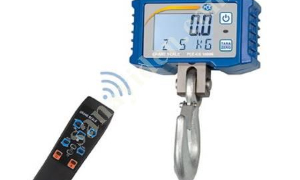 How can you measure the performance of your dynamometer?
How can you measure the performance of your dynamometer?login
A dynamometer is an instrument used in engineering and industry to measure the force and motion of materials. It is an essential tool for engineers to understand how materials move and deform. In this article, we will discuss how to use a dynamometer to measure the performance of your product or service.
To measure the performance of your dynamometer, you will first need to connect it to an electrical outlet and the Dynamometer Test Card. The Dynamometer Test Board is a small piece of equipment that you can buy at most science stores or online. Once connected, turn on the dynamometer by pressing the power button for about 5 seconds.
The dynamometer should now start generating signals. To measure the output signal, you will need to use an oscilloscope or other graphic display device and move the cursor over one of the test sticks and press the green button. The signals should be displayed in various colors on the oscilloscope according to their residual level (1-10).
You can also use this tool (at idle) to measure how long it takes each bar to reach its target value.
What is a dynamometer?
A dynamometer is a device used to measure the performance of an engine or other machine. A dynamometer measures the force exerted by one object on another. It can be used to measure the power and torque of a motor, as well as the speed and yaw angle of a machine.
How to Use Dynamometer.
The first step in measuring the performance of your dynamometer is measuring its output. To do this you will need a meter and some Dynamometer calibration weights. calibration weights are usually available at a hobby store or online. To use your dynamometer, you must connect the meter to the dynamometer cable and place it on a stable surface. Once calibrated, press the button on your meter to measure the output of your dynamometer.
How to Improve the Performance of Your Dynamometer?
You can try adjusting various factors to improve the accuracy of your dinometric measurements, such as:
- Weight of calibration weights
- Diameter of your dynometric probe
- Speed of the dynometric probe
- Dynamometer type
How Do You Measure Your Dynamometer's Performance?
When you measure the output of your dynamometer, it is important to adjust the calibration weights to achieve the desired measurement results. You will need a weight scale and some common sense to set the calibration weights. First, weigh the calibration weights and make sure they are not too heavy or light for your dynometric probe. Next, measure the distance between both ends of your dynometric probe and find the corresponding weight for that distance. Finally, use a medium screwdriver to tighten or loosen the screws on the weight scale until you achieve the desired measurement results.
How to Improve the Performance of Your Dynamometer?
Be Aware of Financial News.
If you're interested in improving the performance of your dynamometer, there are a few things you can do to help. First, make sure you stay up to date on financial news. This will give you an idea of what changes in the market might affect your metrics. Additionally, be mindful of volatility in the economy - this can affect how well your dynamometer performs during tests. Finally, make sure you are prepared for potential difficulties when measuring objects that are shaking or vibrating. By following these tips, you can ensure that your dynamometer performs at its best and gives accurate results.
Be Prepared for Volatility.
Volatility is something everyone experiences at some point in their life. It can be difficult to predict what will happen next, so it's important to be aware of this and plan ahead. One way to deal with volatility is to be prepared for it by becoming familiar with the different types of volatility and how they affect measurement results. Another option is to stock up on testing tools and supplies that will help you effectively measure objects that vibrate or vibrate under varying conditions (such as high or low pressure). By following these tips, you can ensure that your measurements are as accurate as possible, even when the market is going through volatile periods!
conclusion
Dynamometers can be used to measure the performance of a dynamometer. You can improve the accuracy of your data by keeping up to date with financial news, measuring the performance of your dynamometer, and being prepared for volatility. Additionally, if you want to improve the performance of your dynamometer for better results, you can use the tips and strategies outlined in this article. In short, if you want to improve the accuracy and performance of your dynamometer, make sure you stay up to date with the financial news and be prepared for the volatility.
